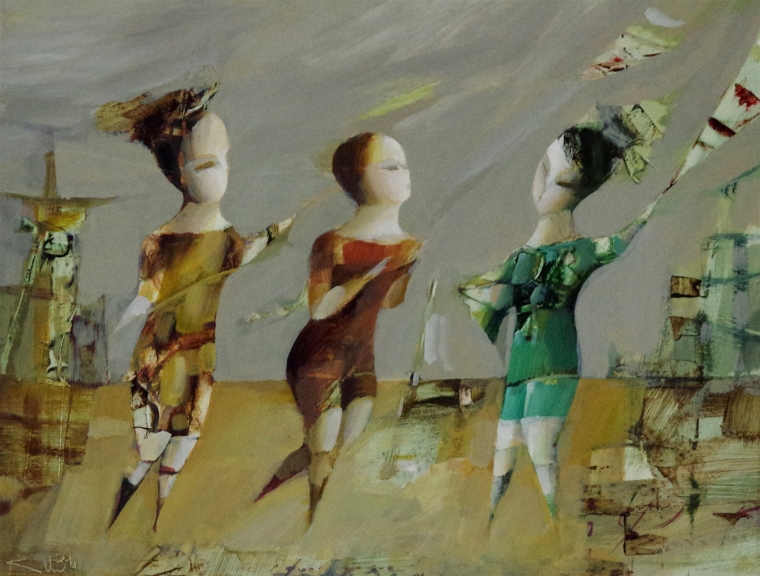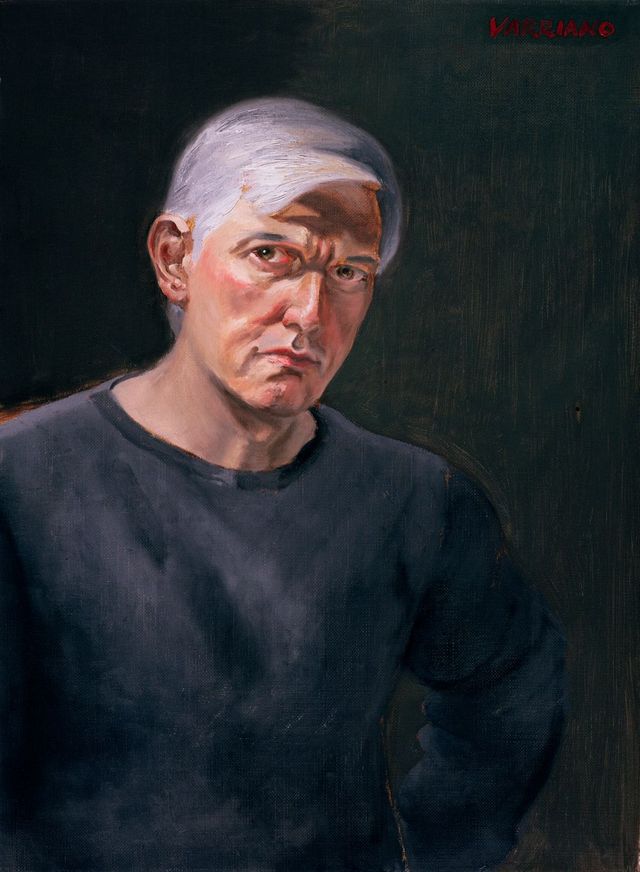Exploring the Depths of Emotion with Figurative Oil Painting Methods
Wiki Article
Mastering the Art of Figurative Oil Paint: Important Tips and Techniques for Aspiring Artists
Figurative oil paint represents a complicated intersection of strategy and interpretation, demanding a thorough comprehension of human makeup, make-up, and color concept. An exploration of color consistency and structure strategies can substantially boost the aesthetic effect of their work.
Recognizing Human Composition
Comprehending human makeup is basic for any artist striving to grasp figurative oil painting. A detailed understanding of the human form enables musicians to develop natural depictions that reverberate with audiences. Understanding of anatomical frameworks, such as muscles, joints, and bones, provides essential understanding right into how the body moves and poses.Musicians need to familiarize themselves with the proportions of the human number, including the connection between various body parts and exactly how these proportions vary across sexes and ages. This understanding permits accurate scaling and perspective in their work. Additionally, comprehending the underlying musculature improves the ability to show motion and stress in a figure, causing an extra dynamic and compelling composition.
Examining makeup additionally helps in determining refined nuances in pose and expression, which are critical for conveying emotion and story within a painting. Resources such as physiological books, life illustration sessions, and on-line tutorials can be indispensable tools for musicians looking for to strengthen their physiological understanding. Inevitably, grasping human composition not only enhances technological skill however also improves an artist's innovative vision, enabling them to bring their metaphorical oil paintings to life with credibility and deepness.
Value of Structure

Key concepts of structure consist of equilibrium, unity, and prime focus. Achieving balance ensures that no single component overwhelms the others, while unity produces a sense of consistency throughout the piece. Focal points accentuate considerable aspects of the artwork, permitting viewers to engage with the narrative or theme much more deeply.
In addition, the usage of leading lines and the regulation of thirds can dramatically improve make-up. Leading lines naturally assist the viewer's look with the painting, while the guideline of thirds provides a framework for placing vital elements in a visually appealing way. By understanding composition, aiming artists can elevate their metaphorical oil paints, changing them right into engaging visual stories that reverberate with their audience.
Mastering Shade Concept
Color concept works as an essential aspect of figurative oil paint that matches the concepts of structure. Recognizing the shade wheel, which includes key, second, and tertiary shades, is necessary for producing unified combinations and efficient visual narratives.Key concepts such as worth, tone, and saturation play an essential function in establishing the mood and impact of a painting. Musicians should explore warm and awesome shades to evoke specific feelings; cozy shades often convey power and enthusiasm, while cool colors can convey calmness and tranquility.
The relationship in between complementary shades-- those opposite each other on the color wheel-- can produce striking contrasts and vibrant make-ups. When compared, these colors improve each other's vibrancy, attracting the viewer's eye and including depth to the artwork.
In addition, recognizing comparable shades permits musicians to achieve a feeling of unity and coherence. By selecting colors that are nearby on the wheel, one can keep a balanced ambience throughout the piece.
Inevitably, mastering color concept gears up striving artists with the tools needed to control shade purposefully, enhancing their capacity to share emotion and story through metaphorical oil painting. figurative oil painting.
Techniques for Structure
A selection of techniques can successfully create appearance in metaphorical oil paint, adding depth and measurement to the art work. One essential method is using impasto, where thick layers of paint are put on the canvas, permitting a three-dimensional quality. This method enhances light communication, developing vibrant aesthetic passion.Another technique is scumbling, which involves why not try this out using a slim layer of lighter paint over a dried out darker layer. This strategy permits the underlying shade to show via, leading check this site out to a soft, textured result that can stimulate a feeling of ambience or age. Dry brushing is also important; using a dry brush with very little paint, musicians can produce fragile textures and great lines, best for capturing the nuances of skin or fabric.
Additionally, combination knives can be used to scratch or use paint, producing one-of-a-kind patterns and structures. Try out various devices and products, such as sponges or dustcloths, can better improve the textural high quality of a painting. Inevitably, mastering these methods needs method and experimentation, permitting musicians to find the diverse responsive top qualities that can raise their metaphorical jobs.
Establishing Your One-of-a-kind Design
A musician's distinct design is usually the conclusion of personal experiences, influences, and strategies refined over time. Creating this uniqueness in metaphorical oil painting calls for a conscious initiative to explore both your internal self and the broader imaginative landscape. Begin by assessing the motifs and subjects that reverberate with you emotionally; your interest will instill credibility into your job.Research numerous designs and movements, however instead of copying, extract aspects that speak with you - figurative oil painting. Try this website out various strategies, shade palettes, and structures, enabling on your own the freedom to play without the pressure of perfection. Keep a sketchbook or journal to document your thoughts, ideas, and imaginative progress; this will act as an important resource for determining reoccuring preferences and themes
Look for positive responses from mentors or peers, as they can supply understandings that brighten aspects of your work you may neglect. Be patient with on your own; the journey of developing an unique design is continuous, advancing with every canvas and each brushstroke you come across.

Conclusion
Understanding metaphorical oil paint demands a comprehensive grasp of human composition, make-up, and shade concept. Welcoming these fundamental concepts will dramatically profit aspiring artists on their creative journey.Metaphorical oil paint stands for an intricate crossway of technique and interpretation, requiring a comprehensive comprehension of human anatomy, make-up, and color theory. An expedition of shade consistency and structure methods can substantially improve the aesthetic influence of their job. By grasping composition, aspiring musicians can raise their figurative oil paintings, changing them right into compelling aesthetic tales that resonate with their audience.
Experiment with different techniques, color schemes, and structures, allowing on your own the liberty to play without the pressure of excellence.Grasping metaphorical oil paint necessitates a comprehensive understanding of human composition, composition, and color concept.
Report this wiki page